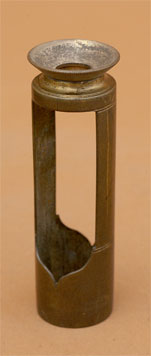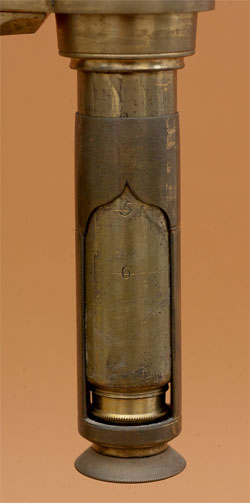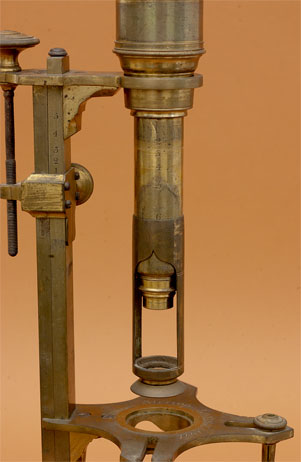

To view opaque specimens, this reflector ("lieberkuhn") was placed over the microscope barrel. The objective used determined the position of the reflector, with the top of the reflector placed at the number corresponding to the objective. Placing the reflective surface at the end of a tube allows the lieberkuhn to be focused separately from the objective, thus optimizing lighting. This arrangement was an invention of John Cuff.
Coarse focus as well as lieberkuhn position is set to "2"; the number of the high power objective used.

Lieberkuhn reflector and sleeve. Here, the reflecting surface faces up.
When viewing opaque samples the spring stage would have been removed. Here the low power objective (#6) is being used. Note that the lieberkuhn sleeve as well as the top of the microscope body mount are placed at the "6" position. Note that the coarse focus as well as lieberkuhn position is set to "6"; the number of the low power objective used.
According to Clay and Court (The History of the Microscope, 1932. The Holland Press, London) the lieberkuhn was invented by Descartes in 1637 (Dioptrique), was re-invented by Leeuwenhoek around 1670, and again by Jean Nathaniel Lieberkuhn (1711–1756) in 1738. It was first referred to a lieberkuhn in 1776 by Martin when he described the "concave speculum" included with his Universal Microscope.